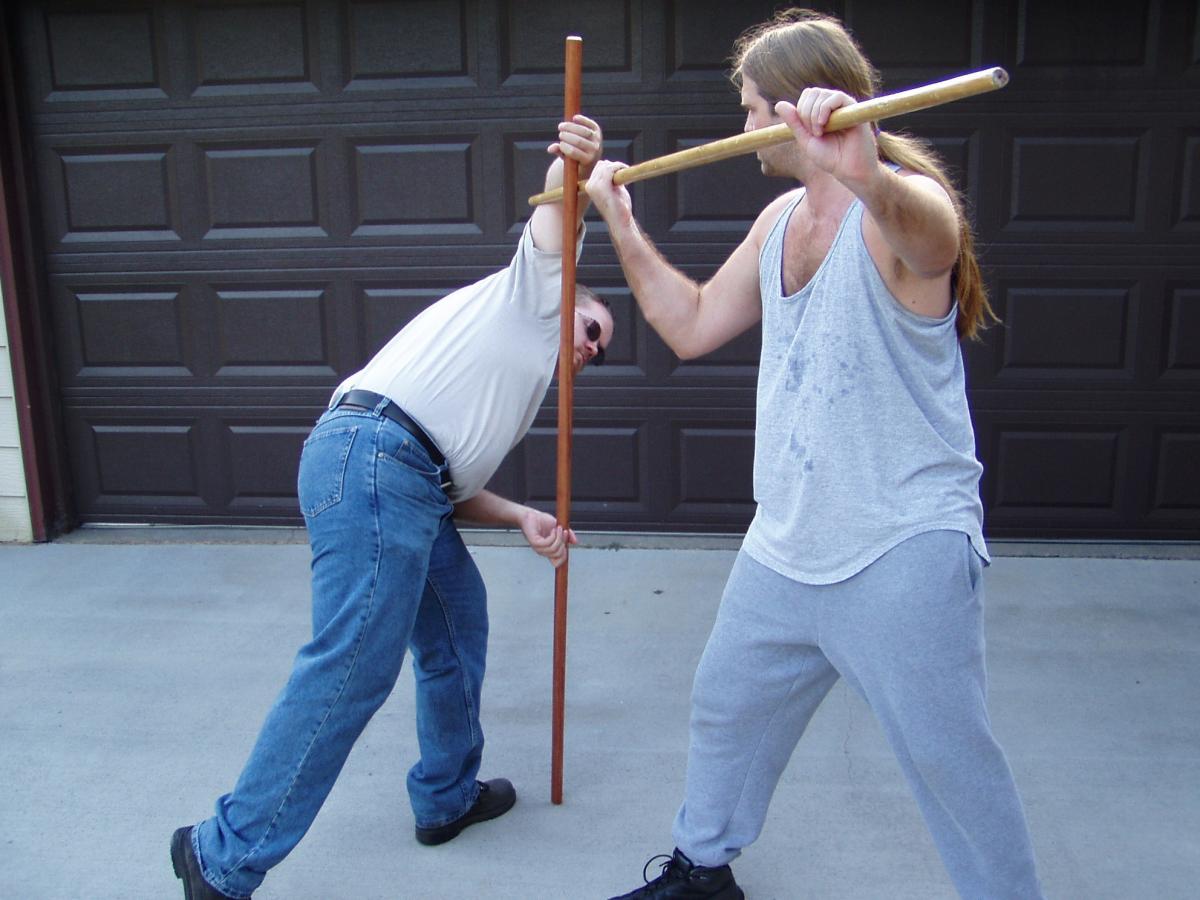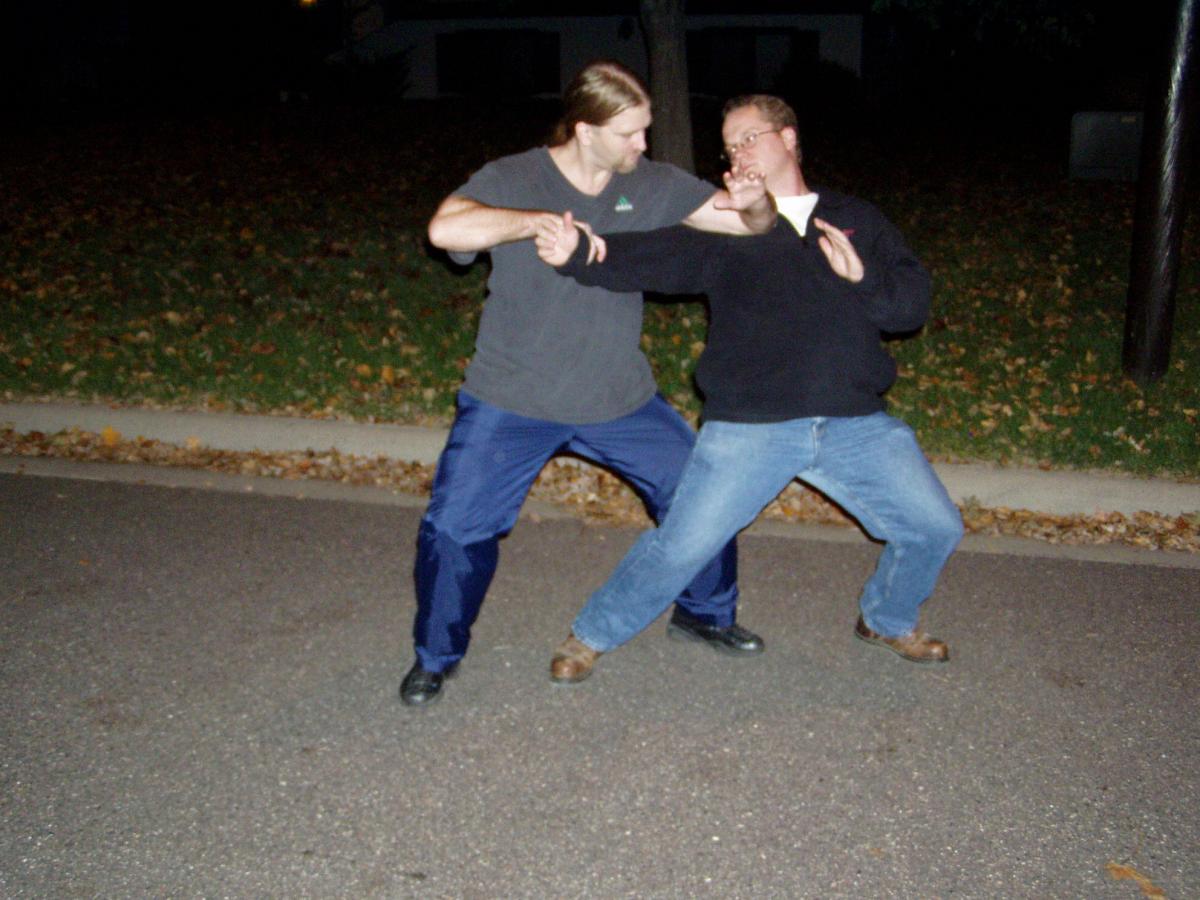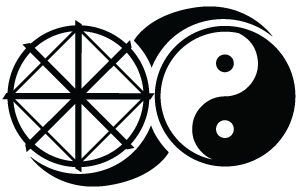Tips
Training
 First, almost all rules have exceptions so if I say something is done in one way I'm usually speaking in general. There will be specific instances that it might not be.
First, almost all rules have exceptions so if I say something is done in one way I'm usually speaking in general. There will be specific instances that it might not be.
-
Practice makes perfect but only if it is perfect practice.
If you practice with bad habits it doesn't matter how much you practice. You will just get better at your bad habits. If you're making mistakes then either you are going too fast or the technique is too complex. The key is slowing down even if it means going Tai Chi speeds. Isolate the technique down to individual moves and if need be do the footwork separate from the upper body. Then integrate it back together. -
Make practice part of your daily life.
When you can find a free minute, work a couple techniques. For example, as you walk around your home, shadowbox using any techniques you're working on: Kicks, strikes, footwork, etc. While microwaving food you've got a couple minutes to practice. While brushing your teeth, stand in a low stance for strength, a one-legged stance for balance or do kicking. While talking on the phone, do simple footwork patterns. Be creative to find ways to practice. It all adds up. -
Take inspiration from all sources.
Look how many traditional styles are based on observing nature (animals, bugs, etc.) An easier way is to observe people. Watch the methods employed by anyone who is at a high level of physical skill (for example sports, music, dance.) Watch how they train, generate power, increase coordination, work strength, endurance, flexibility, mental preparation, visualization, etc then see if you can adapt it to your goals and training. -
Use technology.
If you often train by yourself, then record yourself and watch for errors. If you learn a new technique record yourself while it's fresh in your mind. This will help you to remember. If you have an instructor on tape, watch in slow motion to pick up details (just remember instructors make mistakes also or sometimes have physical limitations due to age or injury). Use the internet to do research but remember anyone can post things it doesn't mean they know what they're talking about also the things that are simplest often are best. The more complicated a move the less likely it will be usable in real life. -
Find a style and teacher that suits you.
There are thousands of different styles. Some styles will claim to have secret or unique techniques. Let me assure you that I've seen hundreds of styles and there is no such thing. Many times I've had instructors tell me they were teaching me a secret technique and after seeing it, I could give a half dozen other styles that used a similar idea. Instructors will often claim to have the best, most traditional (or authentic), secret or unique style. This usually comes from having studied a small number of styles themselves so they don't realize what else is out there, or sometimes it's just self-promotion. If one style were truly the best then after thousands of years of martial arts we would all be using that style.
Instruction
 Instruction is available in multiple formats: live instruction, books and videos. Each has their own pros and cons. In this section I'll list the main ones.
Instruction is available in multiple formats: live instruction, books and videos. Each has their own pros and cons. In this section I'll list the main ones.
Live instruction has the potential to be the most beneficial if you can use it to its potential, and have a good instructor.
The following is a list of advantages to live instruction over books and videos:
- Being able to see a technique in person
- Being able to feel a technique done to you. Especially at advanced levels, your sense of touch will give you detail that your eyes will not perceive.
- The ability to ask questions
- The ability of the instructor to correct mistakes that you may have never noticed on your own and to give individualized advice.
- Most books and videos focus on impressive techniques rather than fundamentals which is actually what is most important
Additionally, books and videos have their own advantages over live instruction:
- Access 24/7: Whenever you have time or desire you can learn
- You don't have to rely on your memory. Anytime you forget something you can review it
- You can proceed at your own pace
- The ability to study from styles or instructors that aren't available in your area or from instructors that are possibly at a higher level than your local instructors
- An advantage of video is the ability to watch a move frame by frame (if you have a player that can do this)
- An advantage of books is the ability to learn something in great detail
Overall I would say live instruction is essential. If you look at most top professional athletes, they still have coaches and trainers. While live instruction is best for building your fundamentals and continuing to advance, it loses much of its advantage with the manner in which many instructors teach. For example many instructors teach large classes by showing a technique a couple times and then leaving students on there own. In this manner you might not be seeing the technique as well as a good video, you're not feeling the instructor doing the technique, and you're not getting the personal corrections and advice. Some instructors also discourage questions. In these cases, a video can be as good or better than live instruction. From written word and still pictures it's difficult (not impossible) to see the transitions and flow of a moving technique. The strength of books is in teaching history and theory due to the great detail that can be gone into. A live instructor could lecture the same material but personally I would rather read a book then listen to hours of lecture.
